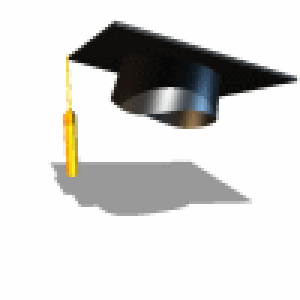What was the cultural legacy of ancient Mesopotamia to successor civilizations?
What was the cultural legacy of ancient Mesopotamia to successor civilizations?
Order 100% Plagiarism free paper
Chicago Manual of Style (CMS) Notesand Bibliography Guidelines
This poster provides basic rules for using Chicago Manual of Style (CMS). To supplement this material, consult The Chicago Manual of Style, 16th edition. This poster follows one of the two CMS patterns of documentation, Notes-Bibliography. Please see the Purdue University Online Writing Lab (OWL) for information on CMS: http://owl.english.purdue.edu/owl/resource/717/01/.
Poster by Megan Lancaster. & Elizabeth Angeli © 2011 The Writing Lab & OWL, Purdue University.
Notes and Bibliography (NB) Notes
Include a note (endnote or footnote) each time you use a source whether through a direct quote or through a paraphrase or summary. Footnotes are added at the end of the page where the source is referenced. Endnotes are compiled at the end of the entire document.
The footnote or endnote itself begins with the appropriate number followed by a period and then a space.
2. Scott Lash and John Urry, Economies of Signs & Space (London: SAGE Publications, 1994), 241-51.
A superscript number should be placed at the end of the sentence to the corresponding bibliographic information being cited.
Lash and Urry’s text, Economies of Signs &Space, was published in 1994.2
The first note should include all relevant information about the source: author’s full name, source title, and facts of publication. If the source is cited again, only include the surname of the author, a shortened form of the title (if more than four words), and page number(s).
6. Lash and Urry, Economies of Signs & Space, 240.
Bibliographies
The bibliography provides an alphabetical list of all sources used in the given work. This page, most often titled Bibliography, is usually placed at the end of the work preceding the index. It should include all sources sited within the work.
Although bibliographic entries for various sources may be formatted differently, all included sources (books, articles, websites, etc.) are arranged alphabetically by author’s last name.
General Model for Citing Books
1. Firstname Lastname, Title of Book (Place of publication: Publisher, Year of publication), page number.
Book by Multiple Authors
2. Scott Lash and John Urry, Economies of Signs & Space (London: SAGE Publications, 1994), 241-51.
Article, Chapter, Essay Short Story, etc., in an Edited Collection
5. Peter Chilson, “The Border,” in The Best American Travel Writing 2008, ed. Anthony Bourdain (Boston: Houghton Mifflin Company, 2008), 46.
Journals
Use quotations marks to set off the titles of articles within the journal. Omit the initial “the” from the journal title. The volume number follows the journal title with no punctuation and is not italicized.
1. Susan Peck MacDonald, “The Erasure of Language,” College Composition and Communication 58, no. 4 (2007): 619.
Electronic Journals
Citing electronic journals generally follows the same format for printed periodicals but include the DOI or URL. Dates are not required for the websites.
1. Henry E. Bent, “Professionalization of the Ph.D. Degree,” College Composition and Communication 58, no. 4 (2007): 141, accessed December 5, 2008, http://www.jstor.org/stable/1978286.
Magazines
Include the author’s name, article title, magazine title, and date.
1. Emily Macel, “Beijing’s Modern Movement,” Dance Magazine, February 2009, 35.
Online Magazines
When your parenthetical citation includes two or more works, order them the same way they appear in the reference list, separated by a semicolon.
1. Barron YoungSmith, “Green Room,” Slate, February 4, 2009, http://www.slate.com/id/2202431/.
Web Sources
Follow the general model below when citing web sources.
1. Firstname Lastname, “Title of Web Page,” Publishing Organization or Name of Web Site in Italics, publication date and/or access date if available, URL.
Newspapers
The names of the author, headline or column headings, newspaper name, month, day and year.
1. Nisha Deo, “Visiting Professor Lectures on Photographer,” Exponent (West Lafayette, IN), Feb. 13, 2009.
i Basics
Unlike footnotes and endnotes, the author’s name is inverted in the bibliography, and the title of books and journals are italicized. Titles of articles, chapters, poems, etc. are placed in quotation marks. The year of publication is listed after the publisher or journal name. All major elements are separated by periods.
General Model for Citing Books
Lastname, Firstname. Title of Book. Place of Publication: Publisher, year of publication.
Book by Multiple Authors
Lash, Scott, and John Urry. Economies of Signs & Space. London: SAGE Publications, 1994.
Articles, Chapter, Essay, Short Story, etc. in an Edited Collection
Chilson, Peter. “The Border.” In The Best American Travel Writing 2008, edited by Anthony Bourdain, 44-51. Boston: Houghton Mifflin Company, 2008.
Journals
MacDonald, Susan Peck. “The Erasure of Language.” College Composition and Communication 58, no. 4 (2007): 585 – 625.
Electronic Journals
Bent, Henry E. “Proessionalization of the Ph. D. Degree.” College Composition and Communication 58, no 4 (2007): 0-145. Accessed December 5, 2008. http://www.jstor.org/stable/1978286.
Magazines
Macel, Emily. “Beijing’s Modern Movement.” Dance Magazine, February 2009.
Online Magazines
YoungSmith, Barron. “Green Room.” Slate, February 4, 2009. http: / /www.slate.com/id/2202431/.
Web Sources
Follow the general model below when cititing web sources.
Lastname, Firstname. “Title of Web Page.” Publishing Organization or Name of Web Site in Italics. Publication date and/or access date if available. URL.
Newspapers
Newspapers are more often cited in text or in notes than in bibliographies. If newspaper sources are carefully documented in the text, they need not be cited in the bibliography.
Deo, Nisha. “Visiting Professor Lectures on Photographer.” Exponent (West Lafayette, IN), Feb. 13, 2009.
Topic is: What was the cultural legacy of ancient Mesopotamia to successor civilizations? Essay 2 is a research essay, for which you are expected to read additional primary and secondary sources. Write it about the topic listed above. Consult selectively some of the most appropriate works listed in the “Bibliography” section under this Course Information link. Your completed essay should be between 3,000 and 4,000 words in length, and must be equipped with endnotes and a bibliography. I have attached a primary and secondary bibliography document that you must use to cite in the document. Thank you
Bibliography Primary Sources
Abelard, Peter, and Heloise. The Letters of Abelard and Heloise. Edited by Betty Radice. Harmondsworth: Penguin Books, 1974.
Abelard, Peter. Abelard’s Christian Theology. Translated and edited by J. Ramsay McCallum. Merrick, NY: Richwood Publishing Co., 1976.
Aquinas, St. Thomas. Summa Theologica. 3 vols. New York: Benziger, 1947.
Aeschylus. Oresteia. Translated by R. Eagles. Harmondsworth: Penguin, 1986.
Alberti, Leon Battista. On Painting. Translated by Cecil Grayson. London: Penguin Books, 1991.
Alighieri, Dante. The Divine Comedy. Translated by John Ciardi. New York: W. W. Norton and Co., 1977.
Alighieri, Dante. Vita Nuova: A Translation and an Essay. Edited and translated by Mark Musa. Bloomington, IN: Indiana University Press, 1973.
Anonymous. Beowulf. Edited and translated by Michael Alexander. Harmondsworth: Penguin Classics, 1973.
Anonymous. Eirik the Red and other Icelandic Sagas. New York: Oxford University Press, 1980.
Apuleius. The Golden Ass. Translated by R. Graves. New York: Farrar, Straus and Giroux, 1951.
Aristophanes. The Complete Plays of Aristophanes. Edited by Moses Hadas. New York: Bantam, 1962.
Aristophanes. Lysistrata. Translated by J. Henderson. New York: Oxford University Press, 1987.
Aristotle. Ethics (The Nicomachean Ethics). Translated by J. A. K. Thomson. Harmondsworth: Penguin, 1953.
Aristotle. Politics. Translated by Sir. E. Barker. Oxford: Oxford University Press, 1958.
Athanasius, St. Select Works and Letters. Grand Rapids, MI: Eerdmans, 1980.
Augustine, St. (Aurelius Augustinus). An Augustine Reader. Edited by John J. O’Meara. Garden City, NY: Doubleday, 1973.
Augustine, St. (Aurelius Augustinus). Confessions. Translated by R. S. Pine-Coffin. Harmondsworth: Penguin, 1966.
Augustine, St. (Aurelius Augustinus). The City of God. Edited by David Knowles. Harmondsworth: Penguin, 1972.
Barnstone, W. (ed.). Greek Lyric Poetry. New York: Bantam Books, 1962.
Bede, The Venerable. The Ecclesiastical History of the English People. Edited and translated by B. Colgrave and R. A. B. Mynors. Oxford: Clarendon, 1969.





